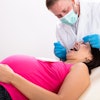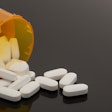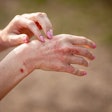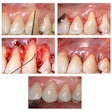A group of Chinese and Australian scientists has developed a handheld, 12 volt-battery-powered, plasma-producing device that can instantly kill harmful bacteria in the oral cavity and other tissue.
In an experiment, the flashlight inactivated a thick biofilm of one of the most antibiotic- and heat-resistant bacteria, Enterococcus faecalis -- a bacterium that often infects the root canals during endodontic treatments (Journal of Physics D: Applied Physics, April 5, 2012).
The biofilms were created by incubating the bacteria for seven days. The biofilms were about 25 micrometers thick and consisted of 17 different layers of bacteria. Each one was treated for five minutes with the plasma flashlight and then analyzed to see how much of the bacteria survived.
Results showed that the plasma not only inactivated the top layer of cells, but penetrated deep into the bottom of the layers to kill the bacteria, the researchers noted in a press release.
The temperature of the plume of plasma in the experiments was between 20-23 C, which is very close to room temperature and therefore prevents any damage to the skin.
Plasma has previously shown its worth in the medical industry by killing bacteria (New Journal of Physics, November 26, 2009) and viruses (JPD:AP, November 4, 2011) on the surface of the skin and in water.
Although the exact mechanism behind the antibacterial effect of plasma is largely unknown, it is thought that reactions between the plasma and the air surrounding it create a cocktail of reactive species that are similar to the ones found in our own immune systems.
The researchers speculate that the device could cost less than $100 to produce.



















